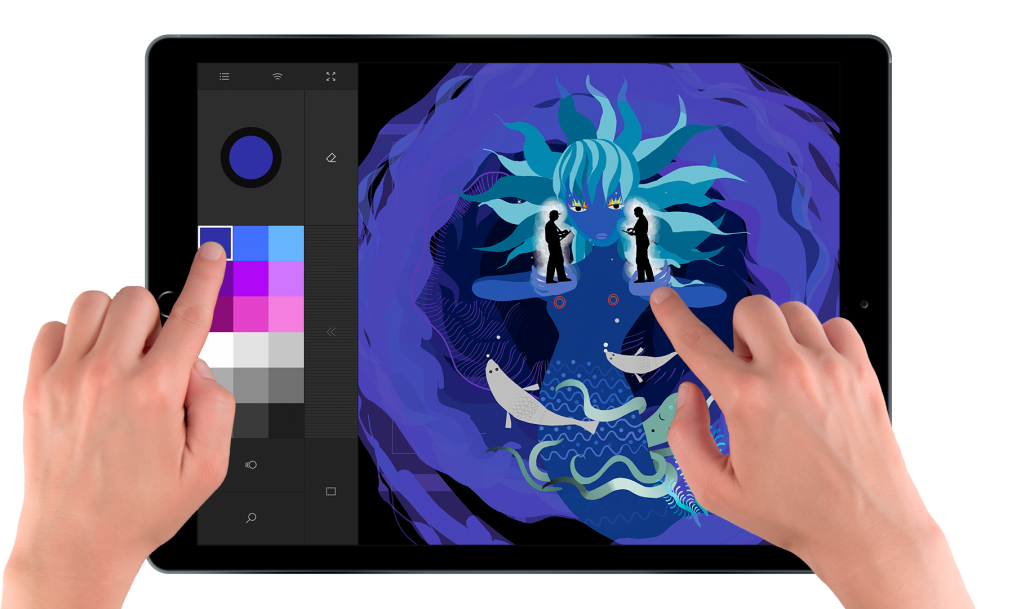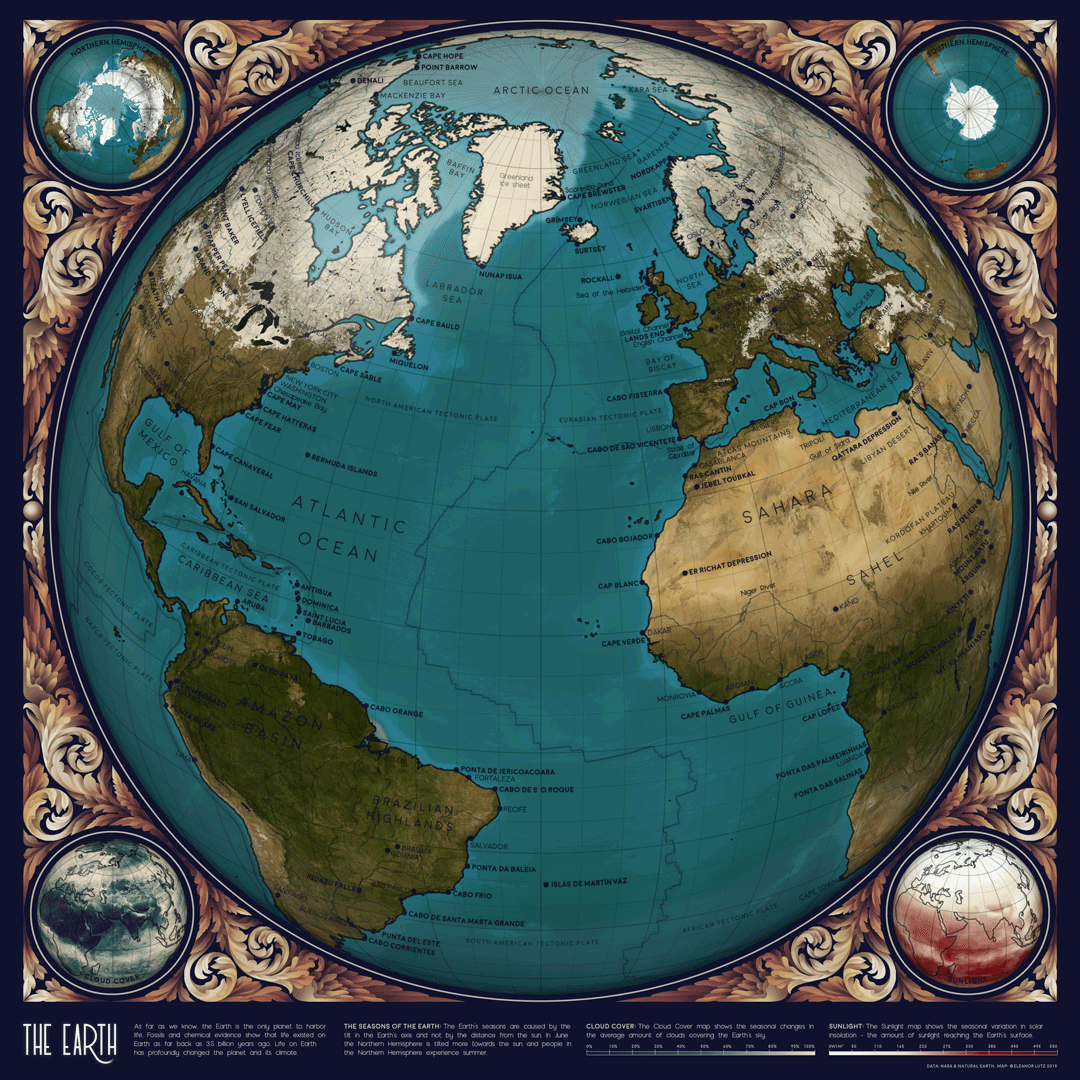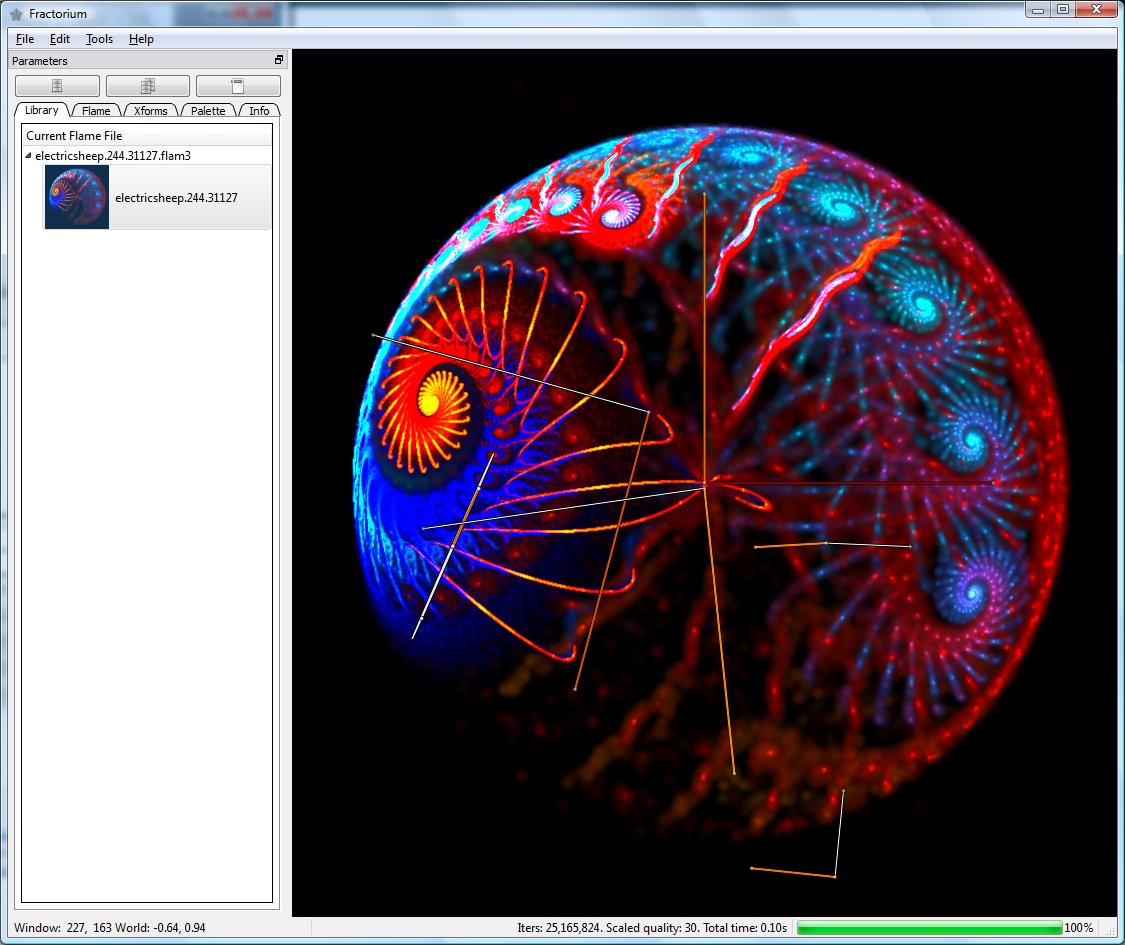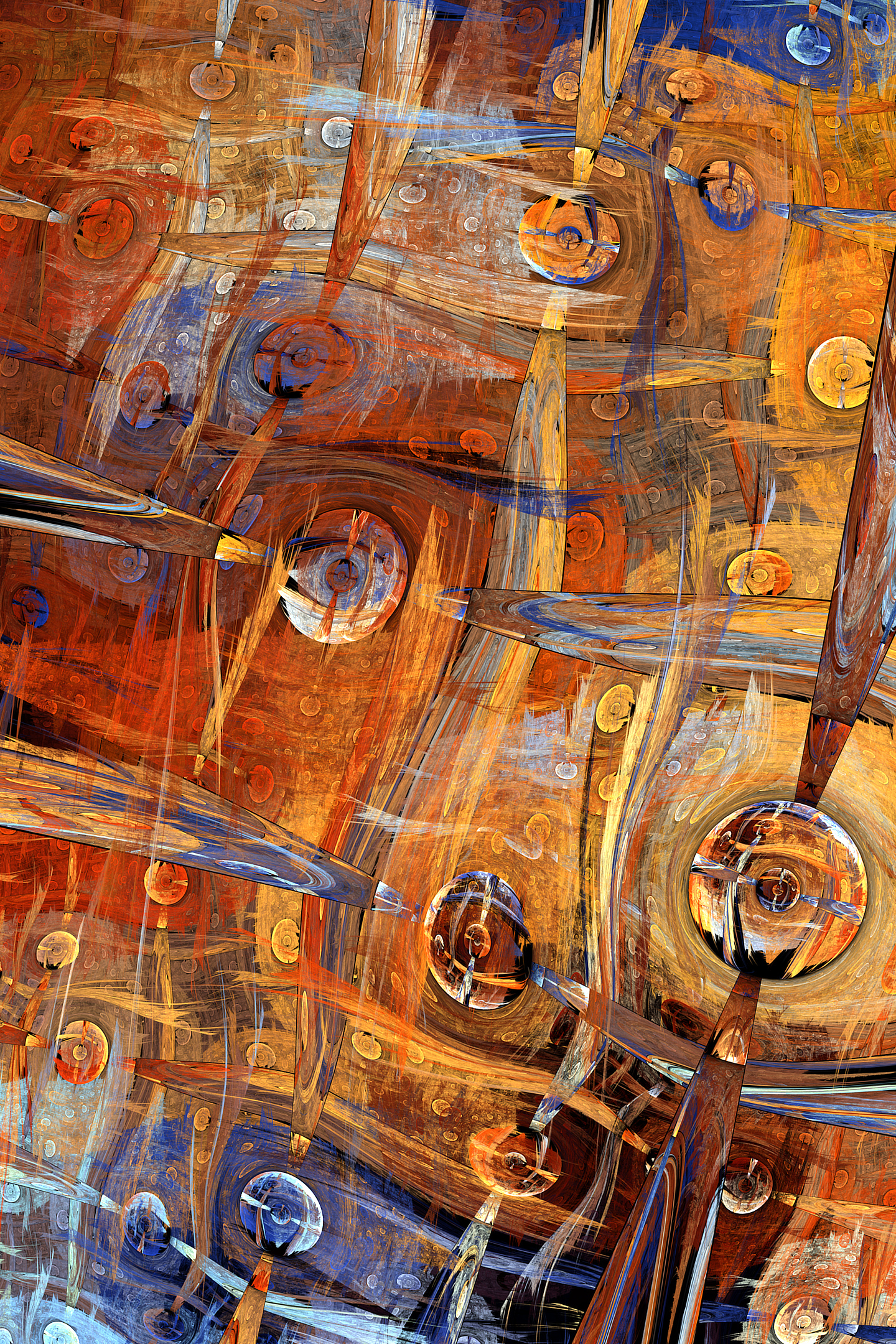

All The Tropes is a community-edited wiki website dedicated to discussing Creators, Works, and Tropes -- the people, projects and patterns of creative writing in all kinds of entertainment: television, literature, movies, video games, and more.
Optical illusions don’t “trick the eye” nor “fool the brain”, nor reveal that “our brain sucks”, … but are fascinating!
They also teach us about our visual perception, and its limitations. My selection emphazises beauty and interactive experiments; I also attempt explanations of the underlying visual mechanisms where possible.
Returning visitor? Check →here for History/News
»Optical illusion« sounds derogative, as if exposing a malfunction of the visual system. Rather, I view these phenomena as highlighting particular good adaptations of our visual system to its experience with standard viewing situations. These experiences are based on normal visual conditions, and thus under unusual contexts can lead to inappropriate interpretations of a visual scene (=“Bayesian interpretation of perception”).
If you are not a vision scientist, you might find my explanations too highbrow. That is not on purpose, but vision research simply is not trivial, like any science. So, if an explanation seems gibberish, simply enjoy the phenomenon 😉.


Paint and Animate Live!
Tagtool transforms your iPad into a visual live instrument. Paint with light, create animated graffiti or tell improvised stories.
https://www.tagtool.org/
https://bibliogram.art/u/tagtoolcrew
Animation playground
We’d like to show you a new way to create hand-drawn animation. So playful you’ll think it’s a toy, but it's secretly a robust app with a reimagined UI for animators and creators.
Wonderfully musical
Taking inspiration from music creation tools, using Looom feels more like playing an instrument than operating software - exploring lines, shapes and colors through loopable time and rhythm.
Everyone in the loop
Looom is all about looping animation with a smile. It was designed for professionals and beginners of any age, and is already being used by some influential indie animators.
"MindCandy Volume 1: PC Demos." The movie explores the definition and roots of an artistic computer sub-culture known as the demoscene, a community that's given me endless inspiration since the 1980s.


NASA publishes many Earth datasets at monthly time scales, and this GIF uses one frame per month to show the fluctuating seasons. The animation focuses mainly on data about Arctic sea ice and vegetation, but it was hard to choose - NASA has many other beautiful seasonal datasets, like fire, temperature, or rainfall.

Ezgif.com is simple online GIF maker and toolset for basic animated GIF editing. Here you can create, resize, crop, reverse, optimize, and apply some effects to gifs.
In 1973, Orson Welles narrated this animated short, which features somewhat surreal artwork by Dick Oden. You can see more of Oden's work here.
The Allegory of the Cave illustrates Plato's view of knowledge as presented in Book VII of The Republic: in ordinary experience, we see only shadows of the true world, which we can only behold by pursuing rigorous philosophical analysis.
This is not the only time "The Cave" has been set to film in some form. Open Culture readers may recall this brilliant version done with claymation. Gluttons for punishment may wish to peruse this collection of 20 YouTube versions at PartiallyExaminedLife.com, many of them frightfully amateurish and some of them presenting a warped and/or incomprehensible version of the story.

Liquid Television is an animation showcase that appeared on MTV andCartoon Network (later Adult Swim).[2] The first season of Liquid Televisionalso aired on BBC Two in co-production with MTV and Cartoon Network. Ultimately, MTV commissioned three seasons of the show, which was produced by Hanna-Barbera, Martin Cartoons and Colossal Pictures. It has served as the launching point for several high-profile original cartoons, including Beavis and Butt-head and Æon Flux. The show was eventually succeeded by Cartoon Sushi. The bulk of Liquid Television's material was created by independent animators and artists specially for the show, and some previously produced segments were compiled from festivals such as Spike and Mike's Sick and Twisted Festival of Animation. Mark Mothersbaugh composed the show's theme music. It was broadcast in New Zealand on TV3 and in Australia on SBS.
There were also a large number of animation pieces adapted from the work ofArt Spiegelman's comic compilation, RAW. RAW featured underground cartoonists such as Mark Beyer, Richard Sala, and Peter Bagge. In particular,Dog-Boy by Charles Burns was based on the artist's series from RAW.[3]
Due to the extensive use of licensed music throughout the series (episodes often began with a contemporary music video being "liquified"), full episodes ofLiquid Television have not been seen in any form since its original run. Selected segments from the series, including the first appearances of Æon Flux, were released on two VHS tapes in the late 1990s as The Best of Liquid Television parts one and two. These tapes are long out-of-print. A collection volume, titled Wet Shorts (The Best of Liquid Television), comprising the two VHS tapes, was released on DVD in 1997, but this, too, is out-of-print.
On October 13, 2011, MTVX, MTV's cross media group, announced the return of Liquid Television.[4] It is now a network that is available on the internet and social media. The first content to debut on the network was "F**KING BEST SONG EVERRR" by Wallpaper, available on the website. Full-length episodes featuring the online content and all-new material were released in 2013.
Gifski converts video frames to GIF animations using pngquant's fancy features for efficient cross-frame palettes and temporal dithering. It produces animated GIFs that use thousands of colors per frame.
Release : https://github.com/ImageOptim/gifski/releases
Usage
I haven't finished implementing proper video import yet, so for now you need ffmpeg to convert video to PNG frames first:
ffmpeg -i video.mp4 frame%04d.png
and then make the GIF from the frames:
gifski -o file.gif frame*.png
See gifski -h for more options. The conversion might be a bit slow, because it takes a lot of effort to nicely massage these pixels. Also, you should suffer waiting like the poor users who will be downloading these huge files.
Fractorium and its associated command line tools can render fractal flames using the CPU, or OpenCL. In order to use OpenCL, you must have an nVidia card that has the Fermi architecture or later, or a recent AMD card. If you attempt to use an unsupported card, you will receive an error message and the CPU renderer will be used instead.

Chaotica is a next-generation fractal art application, designed for both novices and professional artists.
Novice users can enjoy editing randomised fractals to produce stunning HD wallpapers and animations.
Professional users will particularly value the fast, modern rendering engine. High quality animations and huge images for print are easily produced, with real-time imaging controls that will dramatically accelerate your workflow.
What is fractal art?
Fractal art is a digital art medium with a very rich creative space, based on geometry and recursion.
Chaotica's user interface abstracts much of the maths away to provide a fluid artistic process.
Since its invention in 1981, IFS fractals have been popularised by Flam3 and Apophysis. Chaotica extends the creative possibilities of these programs in a powerful, production-oriented environment.

Some example here : https://www.tfmstyle.com/fractality-project

MyBrother.tv is an artwork & use the api of: YouTube & wikipedia
The intend of mybrother tv is to provide a usergenerated content channel out from youtube and wikipedia. it s use a word to trigger the language and the flow of the clips. The Engines are composed with 4 differend intends.
EngineEntertinment: Compose a floating stream-channel arround the word.
EngineWikText: fullfast clipproducer from the word
Engine Multikulti: mix the language to get culturspread about the word
EngineAssoN: using hebs-roule on the word
+: entropic
-: epistemologichot tip: use a Commercial-blocker
actions
link to actual video on youtube.com
fullscreen
show the clip within a playlist
restart mybrother.tv
Paperholm began in August 2014 as a daily project by artist Charles Young. One new object is designed, made, photographed and uploaded each day. All of the models are made using 200gsm watercolour paper and PVA glue. This method allows for rapid construction and exploration of diverse areas of architecture, pushing the possibilities of this single material.
Outpost of the 'Art of Akira' exhibit, featuring original production art used in the creation of Katsuhiro Otomo's 'Akira' (1988).

As GIF creators - OKKULT Motion Pictures is our brainchild - we know it's very easy to show/share an animated GIF on the web, but it's hard to find an offline GIF player to exhibit and sell a GIF as a single, unique artwork.
We have conceived, designed and handcrafted the Giphoscope with the objective of proposing to artists/galleries/
museums/collectors a minimalistic, unconventional, retrofuturistic analog GIF player, entirely tailor made andhandmade in Italy. Thanks to Giphoscope, animated GIF becomes a tangible and exclusive artwork.
The Giphoscope is inspired by the Mutoscope, an early motion picture device, patented by Herman Casler on November 21, 1894.
The Mutoscope worked on the same principle as the "flip book". The individual image frames were conventional black-and-white, silver-based photographic prints on tough, flexible opaque cards. Rather than being bound into a booklet, the cards were attached to a circular core. A reel typically held about 850 cards, giving a viewing time of about a minute (from Wikipedia).
Sliced gifs from Peter Baldes (20069 -+ 2012)
![]()

Pieterjan Grandry succeeded to build a device capable of playing animated gifs, incorporating led lights, microchips and magnetic sensors. The Gif player is a wooden box, much like a turntable, with a dimmer to adjust the speed of the animation and a small looking hole in the front.
One of our most innovative, popular thinkers takes on-in exhilarating style-one of our key questions: Where do good ideas come from?
With Where Good Ideas Come From, Steven Johnson pairs the insight of his bestselling Everything Bad Is Good for You and the dazzling erudition of The Ghost Map and The Invention of Air to address an urgent and universal question: What sparks the flash of brilliance? How does groundbreaking innovation happen? Answering in his infectious, culturally omnivorous style, using his fluency in fields from neurobiology to popular culture, Johnson provides the complete, exciting, and encouraging story of how we generate the ideas that push our careers, our lives, our society, and our culture forward.
Beginning with Charles Darwin's first encounter with the teeming ecosystem of the coral reef and drawing connections to the intellectual hyperproductivity of modern megacities and to the instant success of YouTube, Johnson shows us that the question we need to ask is, What kind of environment fosters the development of good ideas? His answers are never less than revelatory, convincing, and inspiring as Johnson identifies the seven key principles to the genesis of such ideas, and traces them across time and disciplines.
Most exhilarating is Johnson's conclusion that with today's tools and environment, radical innovation is extraordinarily accessible to those who know how to cultivate it. Where Good Ideas Come From is essential reading for anyone who wants to know how to come up with tomorrow's great idea
Gifsicle is a command-line tool for creating, editing, and getting information about GIF images and animations. Making a GIF animation with gifsicle is easy:
gifsicle --delay=10 --loop *.gif > anim.gif
Extracting framesfrom animations is easy too:
gifsicle anim.gif '#0' > firstframe.gif
You can also editanimations by replacing, deleting, or inserting frames:
gifsicle -b anim.gif --replace '#0' new.gif
Some more gifsicle features:
Two other programs are included with gifsicle: gifview is a lightweight animated-GIF viewer which can show animations as slideshows or in real time, and gifdiff compares two GIFs for identical visual appearance.
Manuel français : http://www.traduction.cc/traduction/Manuel-Gifsicle-12.html
Retouches features a series of repeated visual cycles, an animation painted on celluloid that examines transformation in the world around us.
As with 78 tours and Jeu, Georges Schwizgebel tries to grasp the ungraspable -- movement itself -- by playing with notions of perception and representation, changing the balance of shapes for amazing metamorphoses. He turns someone going upstairs into a hurdler and hair being brushed into a windswept forest; as for a tennis game, the ball remains motionless and the court whirls spectacularly around it.
Finally the film calms down into an image of a sleeping woman perhaps dreaming of the very images we ourselves have just observed. Retouches is the virtuoso dream of a visual acrobat.
Generative drawing dream.
a Linux Distribution for artists. Screenshots : https://www.dropbox.com/gallery/331020/1/openArtist?h=49f07b#gallery
The website that really like gif